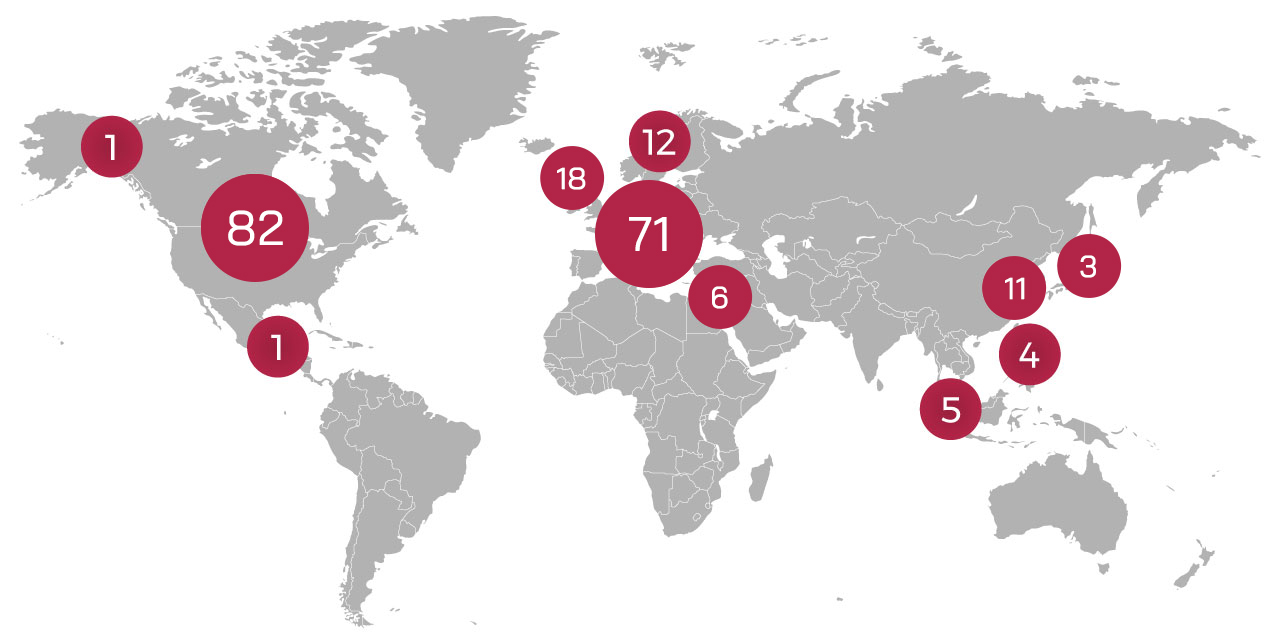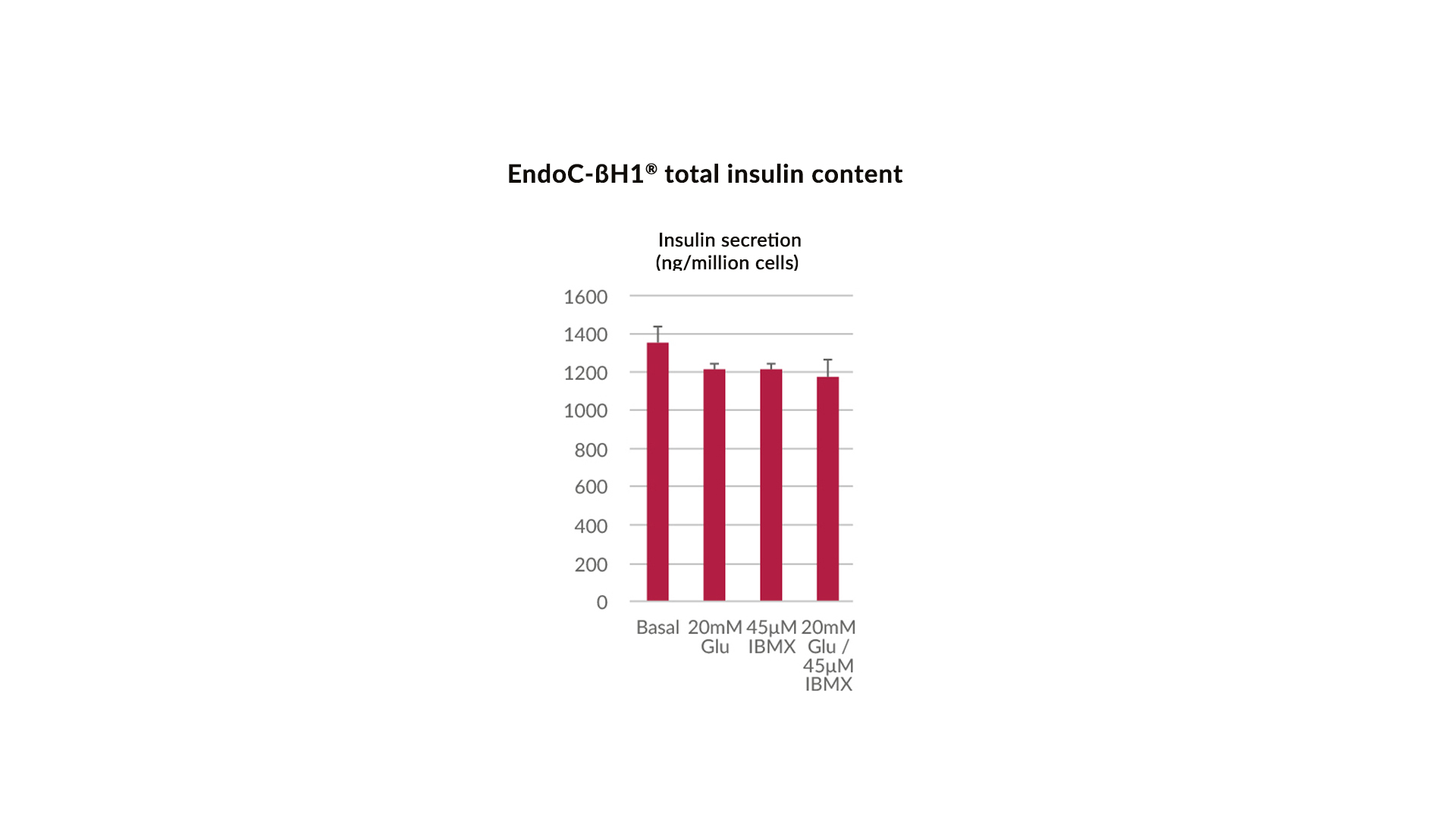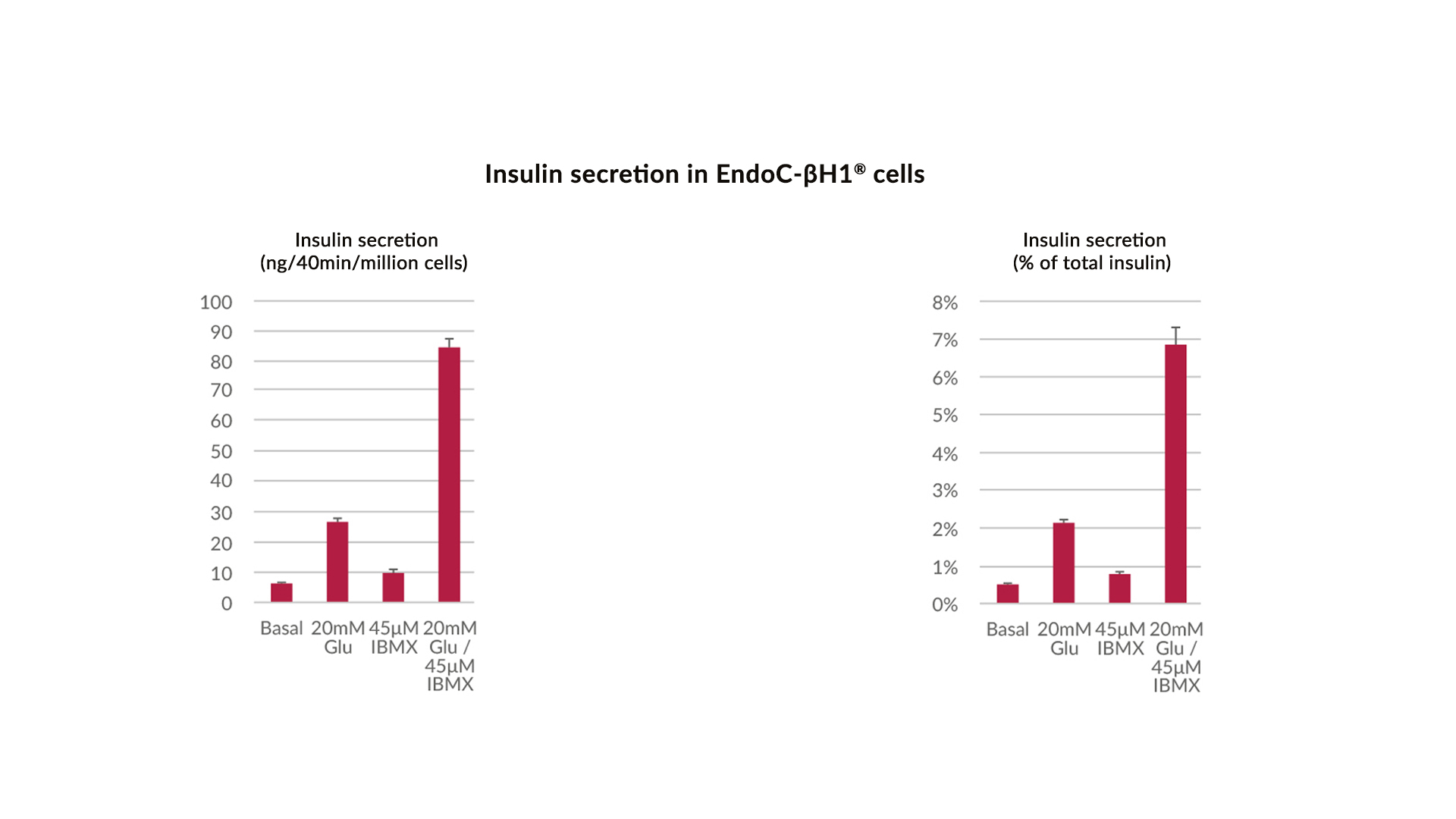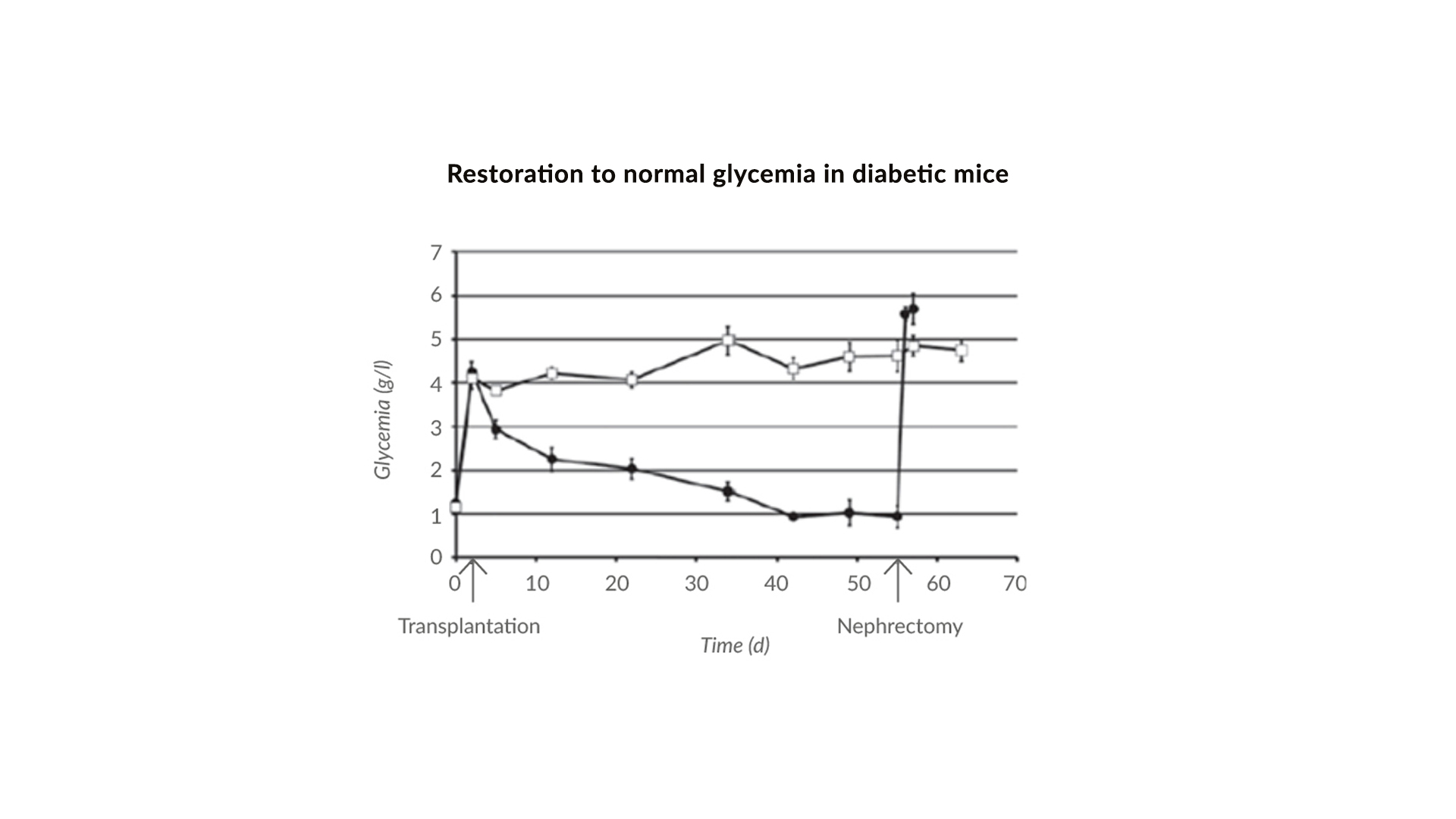
EndoC-βH1®
The human beta cell line of reference
FIRST VALIDATED HUMAN BETA CELL LINE
EndoC-βH1® is a robust and immortalized human beta cell line
This high-quality human pancreatic beta cell line displays a homogeneity that exceeds 99% and an insulin content of 0.5 to 1 µg/million cells. Functionality of EndoC-βH1® cells has been validated using glucose stimulated insulin secretion (GSIS) assay. Our production and assay processes are conducted with rigor and precision, in full respect of the industry’s highest quality standards for reliability and reproducibility. Below are the technical data of EndoC-βH1® characteristics.
HUMAN BETA CELLS IN UNLIMITED QUANTITIES
EndoC-βH1® is an amplifiable human pancreatic beta cell, while maintaining a significant level of function
TESTED AND APPROVED BY MORE THAN 200 ACADEMIC & PHARMACEUTICAL LABORATORIES WORLDWIDE

KEY BENEFITS
APPLICATIONS
TECHNOLOGY LIMITS
DOWNLOADS
QUALITY ASSURANCE
Deposited cell line (Pasteur Institute CNCM)
Short Tandem Repeat analysis available
Batch Release Certificates available
Every batch negatively tested for mycoplasma
Every batch validated for thawing / amplification / GSIS
FUNCTIONAL VALIDATION
INDEPENDENT PUBLICATIONS
How other scientists use EndoC-βH1® cells
Basal hypersecretion of glucagon and insulin from palmitate-exposed human islets depends on FFAR1 but not decreased somatostatin secretion.
2017 Jul 5;7(1):4657.
Neuron-enriched RNA-binding Proteins Regulate Pancreatic Beta Cell Function and Survival.
2017 Feb 24;292(8):3466-3480.
Expression and functional assessment of candidate type 2 diabetes susceptibility genes identify four new genes contributing to human insulin secretion.
2017 Apr 8;6(6):459-470.
Addition of exogenous sodium palmitate increases the IAPP/insulin mRNA ratio via GPR40 in human EndoC-βH1 cells.
2017 Aug;122(3):149-159.
Interferon alpha impairs insulin production in human beta cells via endoplasmic reticulum stress.
2017 Jun;80:48-55.




